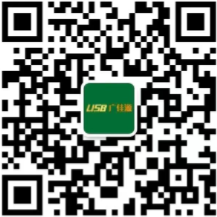 Mr. Chen:136-6225-2835
Mr. Chen:136-6225-2835
 Miss Chen:189-2385-0895
Miss Chen:189-2385-0895
Shenzhen Guangjiayuan Electronic Technology Co., Ltd
Mr. Chen: 136-6225-2835 (same WeChat account)
QQ: 979285705
Miss Chen: 189-2385-0895 (same WeChat account)
QQ: 2391552662
Chen Weiting :135-3824-4786 (same WeChat account)
Chen Weihao: 139-2459-4393 (same WeChat account)
Tel: 86-0755-33182327
Email: gjydz88@163.com
Website: www.usb-type.com
Address: Building 10, Hongxing Gebu Qixiang, Songgang Town, Bao'an District, Shenzhen, Guangdong Province
1、 In the past two decades of development in the field of technology, USB has played a crucial role, such as in transmitting data and electricity, which has greatly affected our lives. In addition, the popularization of USB type-C technology has once again pushed USB to the forefront of the trend. Therefore, this article focuses on introducing the basic working principle and development process of USB, as well as some characteristics of USB 3.1 and Type-C, hoping to be helpful to readers.

2、 USB working principle: USB is an external bus standard used to standardize the connection and communication between computers and external devices. The USB interface has plug and play and hot swap functions, and can connect 127 types of external devices, such as mice and keyboards. USB was jointly launched by multiple companies such as Intel in 1996 at the end of 1994. It has successfully replaced serial and parallel ports and has become a necessary interface for computers and a large number of intelligent devices today.
3、 USB Development History 1. USB 1.0 USB 1.0 was introduced in 1996 with a speed of only 1.5Mb/s. It was upgraded to USB 1.1 in 1998, and the speed was greatly increased to 12Mb/s. This standard interface can also be seen on some old devices. USB 1.1 is a relatively common USB specification, with a high-speed transmission rate of 12Mbps and a low-speed transmission rate of 1.5Mbps. B/s generally represents bit transmission speed, while bps represents bit transmission rate, which is numerically equivalent. B/s and B/s, BPS and bps cannot be confused. 2. The USB 2.0 specification evolved from the USB 1.1 specification, with a transmission rate of 480Mbps, which is equivalent to 60MB/s in MB, sufficient to meet the speed requirements of most peripherals. The "Enhanced Host Controller Interface" in USB 2.0 defines an architecture that is compatible with USB 1.1 and can be used to drive USB 1.1 devices using USB 2.0 drivers. That is to say, all devices that support USB 1.1 can be used directly on the USB 2.0 interface without worrying about compatibility issues, and accessories such as USB cables, plugs, etc. can also be used directly. For engineers, the main obstacles to developing USB 2.0 interface products lie in facing complex USB 2.0 protocols, writing USB device drivers themselves, and being familiar with microcontroller programming. This not only requires considerable VC programming experience, but also the ability to write hardware programs for USB interfaces, so most people give up developing their own USB products. 3. The USB 3.0 Promoter Group is composed of Intel, Microsoft, HP, Texas Instruments, NEC, ST-NXP and other industry giants. The organization is responsible for formulating the new generation of USB 3.0 standards. The theoretical speed of USB 3.0 is 5.0Gb/s, but it can only reach 50% of the theoretical value, which is close to 10 times that of USB 2.0. The physical layer of USB 3.0 adopts an 8b/10b encoding method, which results in a theoretical speed of 4Gb/s. The actual speed also needs to deduct protocol overhead, which is slightly lower than 4Gb/s. It can be widely used in PC peripherals and Consumer electronics. USB 3.0 will be referred to as "USB SuperSpeed" in practical device applications, following the previous USB 1.1 FullSpeed and USB 2.0 HighSpeed. The next generation type-c USB interface can support forward and backward dual insertion, and has strong data transmission signals, but currently there are limited manufacturers. 4. The USB 3.1 specification was released in 2013 and is divided into two versions: Gen 1 and Gen 2. In fact, the Gen 1 version is just a vest for USB 3.0 (the theoretical maximum is still 5Gbps and has not changed), but there are still USB 3.1 Gen 1 sales of type-c, which is equivalent to USB 3.0 type-c. USB 3.1 still retains the type-a version. USB 3.1 has undergone significant changes. Not only can the Gen 2 version provide twice the transmission speed of USB 3.0, but the type-c interface also uses anti obfuscation design, supporting forward and reverse insertion. However, USB 3.1 does not support downward and requires the use of adapters.
In December 2013, the USB 3.0 promotion team announced the rendering of the next generation USB type-c connector, which was then ready for mass production starting in August 2014. The highlights of the new interface are its slimmer design, faster transmission speed, and stronger power transmission. The biggest feature of the type-c double-sided pluggable interface is its support for USB interface double-sided insertion, officially solving the global problem of "USB never plugs in". It can be plugged in on both sides, and the USB data cable used with it must also be thinner and lighter. USB 3.1 and USB type-c are not the same concept. Some people must have noticed that sometimes the words USB 3.1 and USB type-c can be interchanged in certain situations, which leads to many people's blurring of the boundary between these two concepts. Simply put, USB 3.1 is an industry standard and also the revision number of the current standard. It is a technical standard and not a physical product. But USB type-c is a new type of connector, consisting of a type-c plug and a type-c socket. More importantly, although USB type-c is designed based on USB 3.1, it does not mean that devices using this connection method support the USB 3.1 standard. For example, the Nokia N1 tablet, although also using a USB type-c plug, is still a USB 2.0 device. The same concept applies to OnePlus 2 smartphones.
At the same time, for devices using the USB 3.0 type-a interface, this blue marked interface often appears on laptops and desktops, but is compatible with the USB 3.1 standard. So what's the point of doing this? Why do some devices use USB type-c interfaces that are not compatible with the USB 3.1 standard? That's right, just for convenience. In general, USB type-c has the following characteristics: 1. The maximum data transmission speed reaches 10Gbit/s, which is also the standard of USB 3.1; The size of the type-c interface socket end is approximately 8.3mm × 2.5mm slim design; 3. Supports the "front and back insertion" function, which can be inserted from both sides, and can withstand 10000 times of repeated insertion and removal; 4. The standard specification connecting wire equipped with a type-c connector can pass 3A current, and also supports a "USB PD" with USB power supply capacity, which can provide up to 100W of power. USB type-c will become the dominant USB connection. The USB type-c plug and interface can support USB 3.1 high-speed connection, transmit 4K standard signals in the display port, and bear 100W power supply. All of this is done at the same time, as long as all technical standards are met. Due to the current view that USB type-C will not become outdated, it is highly likely to become the dominant form of USB connectivity in the future. At present, some manufacturers and products have begun to take action. For example, Apple's MacBook uses a type-c single interface design, which can be used for multiple functions such as charging, data transmission, and video output; Google's Chromebook Pixel is also equipped with two USB type-c interfaces and implements the same functionality. However, the gradual popularity of USB type-c will result in a large number of existing USB data cables becoming ineffective as they are not compatible with USB type-c. We cannot insert micro USB into the USB type-C interface, but compared to the more advantages brought by USB type-C, it is also a trend to eliminate the old batch of connection standards.
Source: Network organization
Contact person:
Mr. Chen 136-6225-2835 (same WeChat account)
Miss Chen 189-2385-0895 (same WeChat account)
Chen Weiting 135-3824-4786 (same WeChat account)
Chen Weihao 139-2459-4393 (same WeChat account)
Address:
Building 10, Hongxing Gebu Qixiang, Songgang Town, Bao'an District, Shenzhen, Guangdong Province
 |
 |
| Technology 1 | Technology 2 |